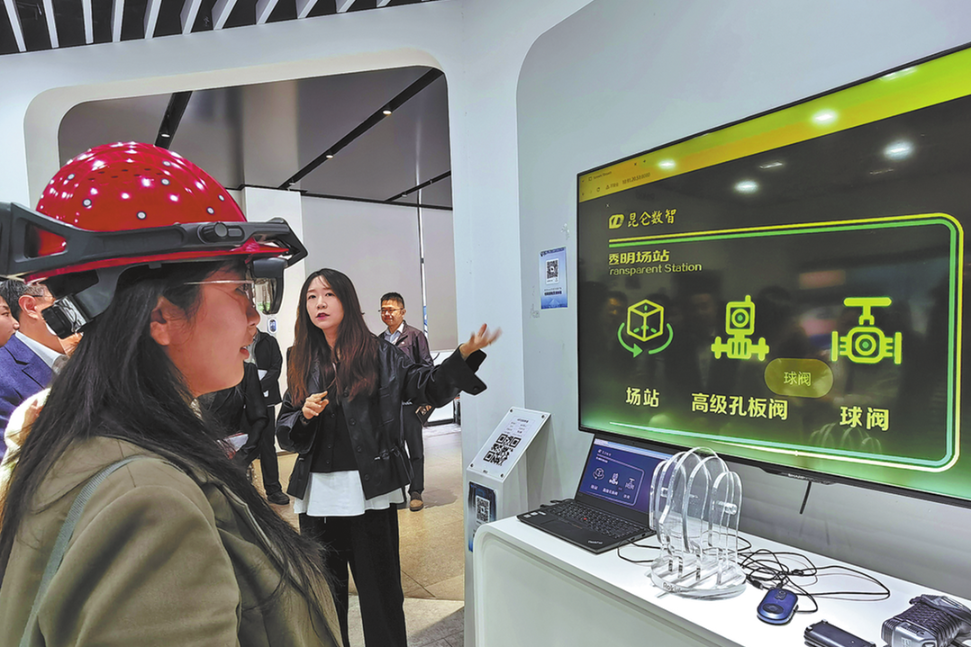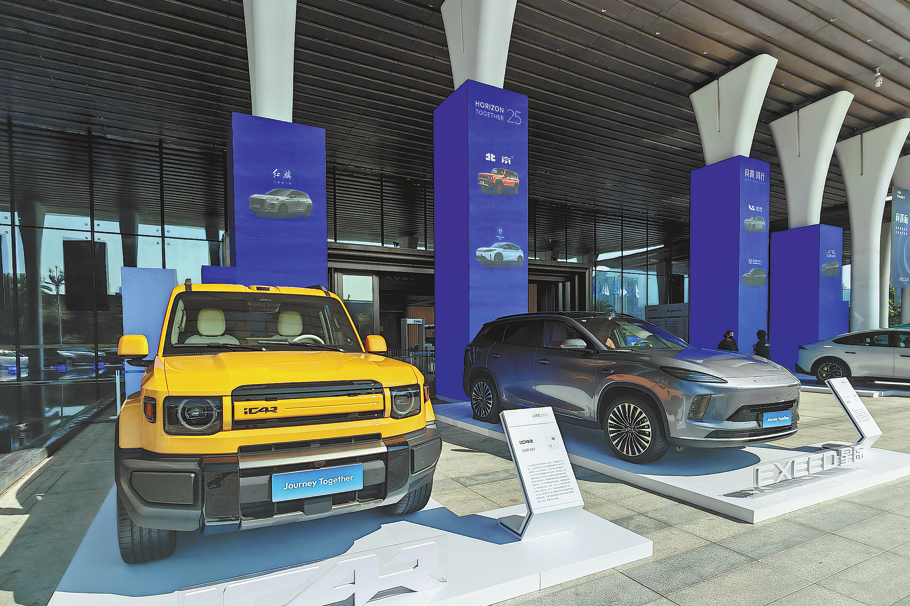An enduring memory

This isn't just another assignment. For the first time, I'm covering an event as both a reporter and a competitor.
When tasked with covering Hyrox Shanghai, a quick search revealed its bold claim: "The Fitness Competition for Every Body." So, as a casual gym-goer, I decided to sign up for the women's doubles division.
To understand how a niche, German-conceived race turned into a global fitness juggernaut, which stages hundreds of events in nearly 50 countries and regions, I want to experience the story from within — not just from the sidelines.
Hyrox blends running with functional exercises — a one-kilometer run followed by a workout station, repeated eight times.
As a women's doubles team, we each had to run 8 km (in intervals of 1 km), row 1000 meters on an upright cardio training machine, push a sled 50 m, then pull it the same distance, execute 80 m of burpee broad jumps, row 1000 m on a machine, perform a 200 m farmer's carry with two 16 kilogram kettlebells, lunge for 100 m while carrying a sandbag and, finally, complete 100 wall ball throws.
Some of these challenges were new to me and my partner Gulmira Abliz, a Uygur woman I befriended on a hike near Urumqi, capital of Northwest China's Xinjiang Uygur autonomous region.
Our scheduled start time wasn't until 3 pm, yet we arrived at the Shanghai World Expo Exhibition and Convention Center early in the morning, where Hyrox events — singles, doubles and relays — were being held in successive waves throughout the day.
Stepping into the arena, we were engulfed by pounding electronic music with MCs energetically hyping up the crowd.
The warm-up area was packed with sculpted athletes, stretching their perfectly defined muscles with laser-like focus. Gulmira and I exchanged uneasy glances — here we were, a pair of completely untrained, thirty-something first-timers, suddenly questioning whether we could possibly complete the same challenges as our Adonis-like counterparts.
We then went to the spectator stands lining the track, where the passing parade of runners — spanning all ages and body types — put our minds at ease.
Among them, a competitor wearing a fluorescent green tank top with a backwards baseball cap and sporting a salt-and-pepper beard stood out from the crowd as he ran alone.
It was 57-year-old Christian Toetzke, the CEO and co-founder of Hyrox, who was participating in the men's singles.
The Shanghai event attracted 3,200 registered participants from 52 countries and regions — nearly double the number of competitors at the Beijing leg in November, which was Hyrox's first event on the Chinese mainland.
"This is what we have seen so far in every other country in the world — that, basically, we double the number of participants at every event," Toetzke told me after completing his race.
Recognizing China's national fitness campaign, he sees tremendous potential for Hyrox in the market.
In his view, fitness in China is still in its early stages. While gym memberships are booming, most members train without clear objectives. Hyrox changes that by offering structured goals, while maintaining inclusivity in regard to fitness levels.
"Hyrox is about getting better and faster in a real competition. If we can change people's mindset, China will be our biggest market in the world for sure," he said. "We want to help people change their lifestyle — becoming more physically fit, which leads to greater longevity and happier living," he added.
Jonathan Hopkins, 45, is a keen Hyroxer who traveled all the way from Dublin in Ireland, to participate in Shanghai. Having competed in Hyrox events in France, Spain and Qatar, he completed the men's singles challenge in one hour and 18 minutes in Shanghai — a personal best.
"I feel super proud of myself," he said, explaining that, before discovering Hyrox, he had been a regular, but aimless gym-goer. Now, seeing his Hyrox finish times improve brings him increasing joy.
As an experienced Hyrox athlete, he generously shared some tips with us, and, armed with his advice, we nervously took our positions at the starting point, where hundreds of pairs of women buzzed with excitement. Together we counted down loudly before charging forward.
Each station was marked by carnival-style yellow inflatable arches — after each one kilometer run, we'd pass through an arch to tackle the next challenge.
Once we started, my anxiety melted away. The event felt like a fitness playground, where stations were amusement rides and runs were the queue lines.
The women's doubles division had a surprisingly non-competitive atmosphere. Along the course, we exchanged cheers and high-fives with many other teams, including a Spanish-Ukrainian duo, who told us they were first-timers too.
Soon, the men's pro division launched in staggered heats. As we ran our laps, groups of those aforementioned Adonises came zooming past us. It felt surreal; two casual gym-goers, with zero athletic pretensions, sharing the arena with human racecars. Their energy was contagious, though. After sprinting to the finish line, striking the gong and getting our medals, the MC hurried over, cheering: "You did it!"
That moment was electric. It wasn't about our time or rank. It was about proving something bigger: showing up and pushing through together, and discovering strength we never knew we had.

Today's Top News
- Jimmy Lai found guilty of colluding with foreign forces
- Hong Kong court opens session to deliver verdict on Jimmy Lai's case
- China's economy posts steady growth in Nov
- Death toll rises to 16 in Sydney's Bondi Beach shooting
- Tariffs proving costly for US and partners
- Firm stance on opening-up wins praise






























